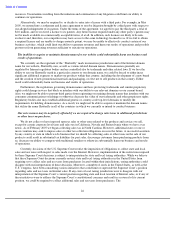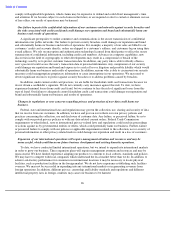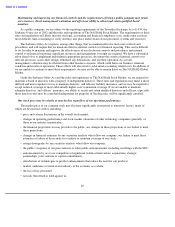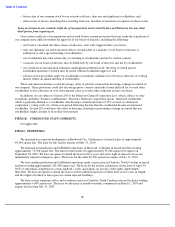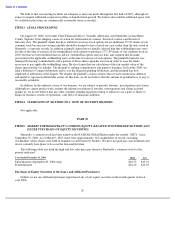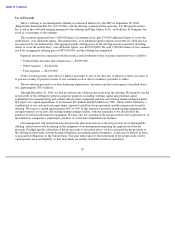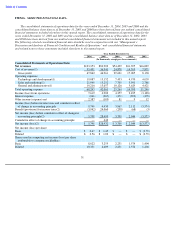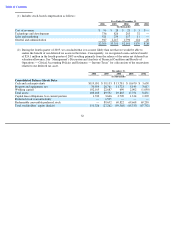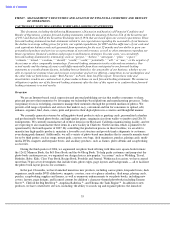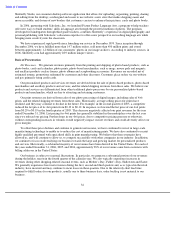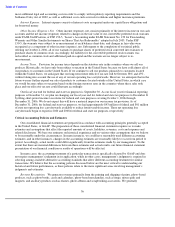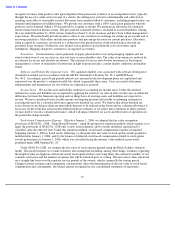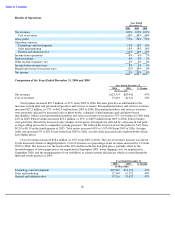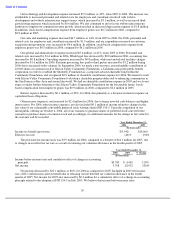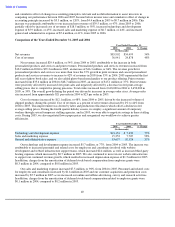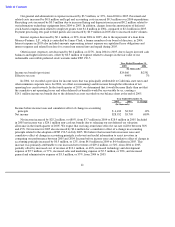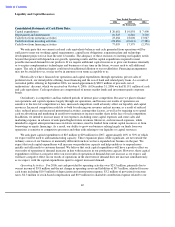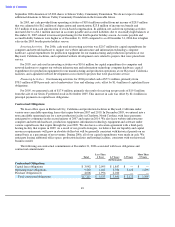Shutterfly 2007 Annual Report Download - page 39
Download and view the complete annual report
Please find page 39 of the 2007 Shutterfly annual report below. You can navigate through the pages in the report by either clicking on the pages listed below, or by using the keyword search tool below to find specific information within the annual report.
Table of Contents
Shutterfly Studio, our consumer desktop software application that allows for uploading, organizing, printing, sharing
and editing from the desktop; a redesigned and easier to use website; a new store that makes shopping easier and
more accessible; and dozens of new borders that customers can use to enhance their pictures, cards and photo books.
In 2006, partnering with Scholastic, Inc. we launched Picture Perfect Language Arts, a program to help teachers
offer new ways to build students’ skills in language arts through the powerful medium of photos. The program,
developed for kindergarten through third grade teachers, combines Shutterfly’
s experience in digital photography and
personal publishing with Scholastic’s education expertise to offer a new perspective on teaching language arts while
bringing more creativity into the classroom.
We have experienced rapid growth since launching our service in December 1999. Since inception through
December 2006, we have fulfilled more than 14.7 million orders, sold more than 450 million prints and stored
between approximately 1-2 billion of our consumers’
photos in our image archives. According to industry sources, in
2006, Shutterfly.com had approximately 28.9 million unique visitors.
Basis of Presentation
Net Revenues. We generate revenues primarily from the printing and shipping of photo-
based products, such as
photo books, cards and calendars, photo prints, photo-based merchandise, such as mugs, mouse pads and magnets,
and ancillary products such as frames, photo albums and scrapbooking accessories. Revenues are recorded net of
estimated returns, promotions redeemed by customers and other discounts. Customers place orders via our website
and pay primarily using credit cards.
Our personalized products and services revenues are derived from the sale of photo-based products, photo-
based
merchandise and ancillary products and services, and the related shipping revenues from these sales. We believe our
products and services are differentiated from other traditional photo processors by our personalized photo-based
products and merchandise, which are key to attracting and retaining customers.
Our print revenues are derived from sales of our photo processing of digital images, including sales of 4×6
prints, and the related shipping revenues from these sales. Historically, average selling prices for prints have
declined, and they may continue to decline in the future. For example, in the second quarter of 2005, a competitor
reduced the list price of its 4×6 prints from $0.19 to $0.12. In response, we lowered the list price of our 4×6 prints
from $0.29 to $0.19 in the fourth quarter of 2005. This decrease negatively affected our print revenues for the year
ended December 31, 2006. List pricing for 4×6 prints has generally stabilized in the marketplace over the last year
since we reduced our pricing. Further drops in our 4×6 prices, due to competitive pricing pressure or otherwise,
without corresponding increases in volumes would negatively impact our net revenues and could adversely affect our
gross margins.
To offset these price declines and continue to generate net income, we have continued to invest in large scale
manufacturing technology to enable us to reduce the cost of manufacturing prints. We have also continued to recruit
highly qualified personnel with specialized skills in print manufacturing. We believe that these strategies have
allowed us, and will continue to allow us, to compete successfully with other companies in our industry. In addition,
we continue to focus on diversifying our business towards the large and growing market for personalized products
and services. Historically, a substantial majority of our revenues have been derived in the United States. For each of
the years ended December 31, 2006, 2005, and 2004, approximately 98% of our revenue came from customers with
billing addresses in the United States.
Our business is subject to seasonal fluctuations. In particular, we generate a substantial portion of our revenues
during the holiday season in the fourth quarter of the calendar year. We also typically experience increases in
revenues during other shopping-related seasonal events, such as Mother’s Day, Father’s Day, Halloween and Easter.
We generally experience lower net revenues during the first, second and third quarters and, as is typical in the retail
industry, have incurred and may continue to incur losses in these quarters. Due to the relatively short lead time
required to fulfill orders for our products, usually one to three business days, order backlog is not material to our
business.
34


